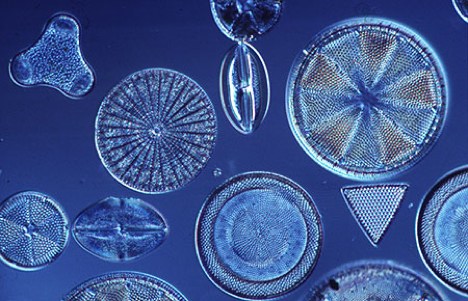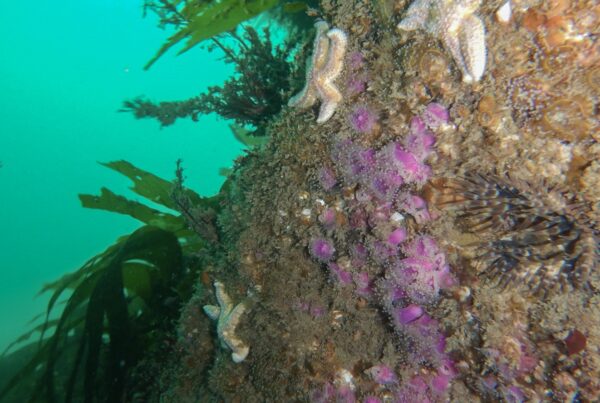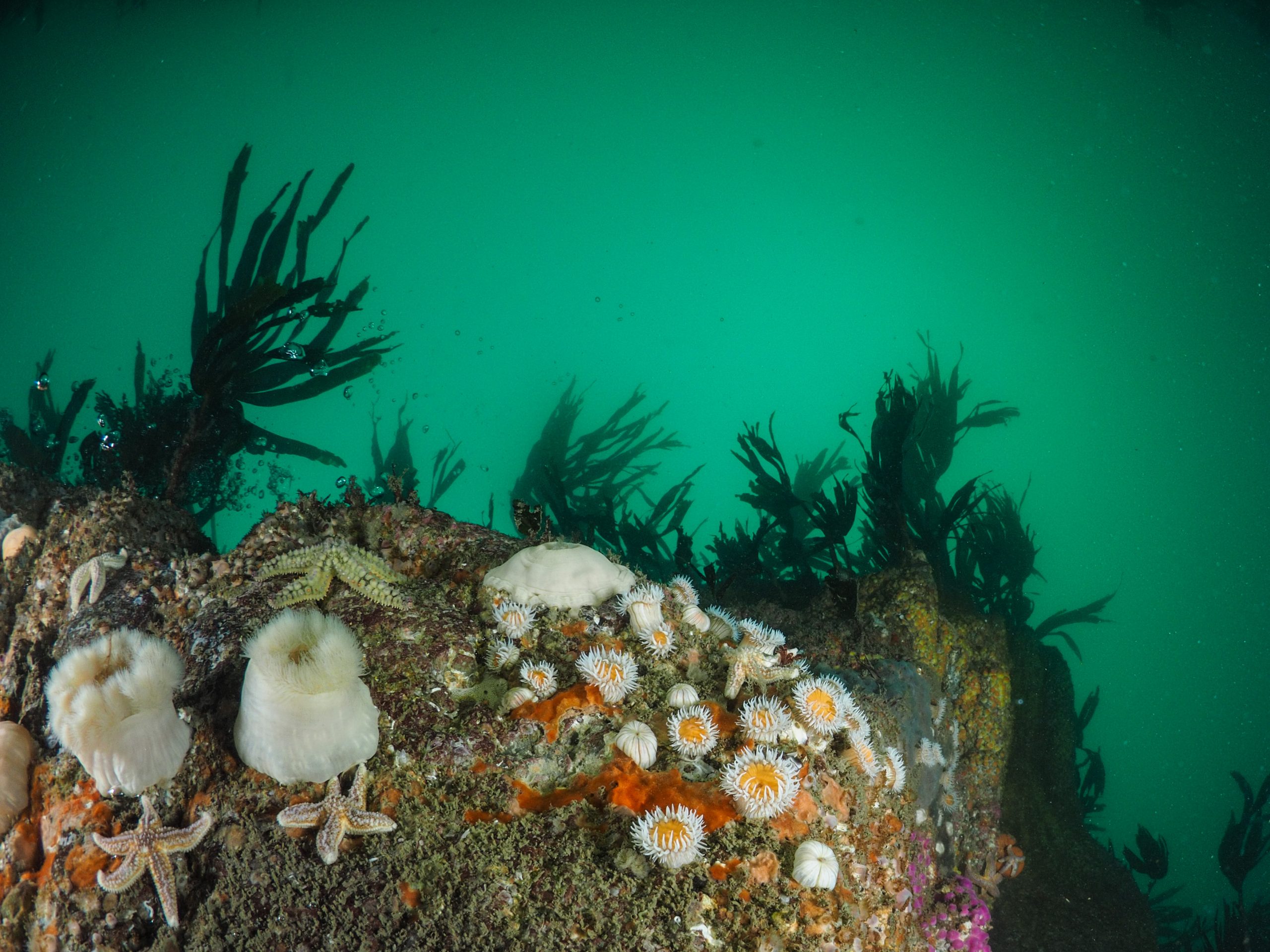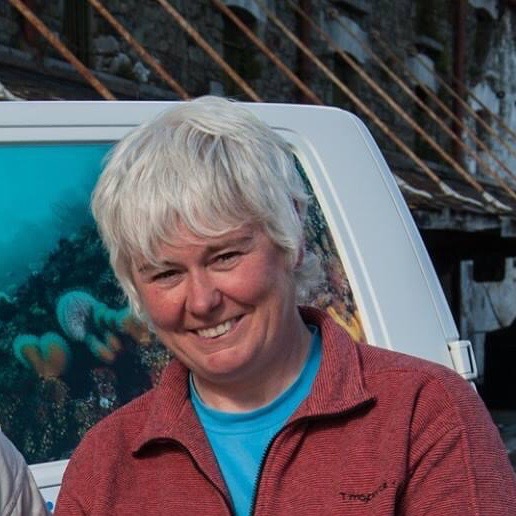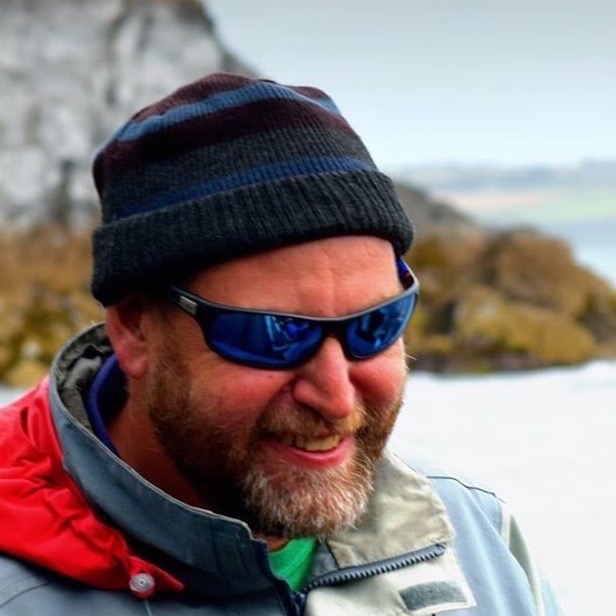By Johnny Hamilton
Last Monday we had our first sighting of the mighty and graceful basking shark with one of our divers ‘bumping’ into one off the Old Head. As I am yet to lock eyes on this impressive creature the encounter has me all excited. Graham and Anne have assured me that it is only a matter of days or weeks before I do so. Bring them on I say. Second only to the whale shark in size the basking shark is the largest fish to be seen around these parts, (See our Marine Life section). What brings them to our coast I hear you ask? Well, it’s not the Murphys, the Guinness, or the chance to see Grahams beard.

Phytoplankton- Diatoms
These beautiful creatures are coming our way to feed on the ever increasing plankton numbers around our coast at this time of season. Similar to plant growth on land springtime heralds an increase in ocean productivity. Phytoplankton (from the greek meaning plant wanderer) play an essential role in the biology of the seas by being the primary producers of food for other organisms. With an increase in nutrients due to upwelling, phytoplankton photosynthesizes using carbon from the atmosphere with the suns energy to produce glucose and, importantly for us, oxygen. Diatoms (made of silica – glasslike) are the most abundant phytoplankton and the most productive organism in the world. Feeding on the different types of phytoplankton (approx. 5000 species) are zooplankton (from the greek meaning animal wanderer).
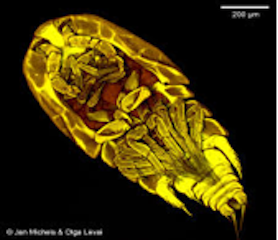
Zooplankton-Copepod
Zooplankton come in all shapes and sizes. Copepods, 0.5mm to 1.5cm, account for up to 70% of all zooplankton making them the most abundant animal on earth! Examples of larger zooplankton are krill and jellyfish – macroplankton. Zooplankton are usually found at depth, rising to the surface at night to feed on the phytoplankton. Zooplankton populations have been found to rise to the surface during a solar eclipse and descend during a full moon.
Feeding on this ‘delicious’ menu are the basking sharks. The basking shark can be spotted from afar by its impressive dorsal fin breaking the surface in groups as large as fifty or just the lone wanderer.
And so, we are watching and waiting. Come join us.
